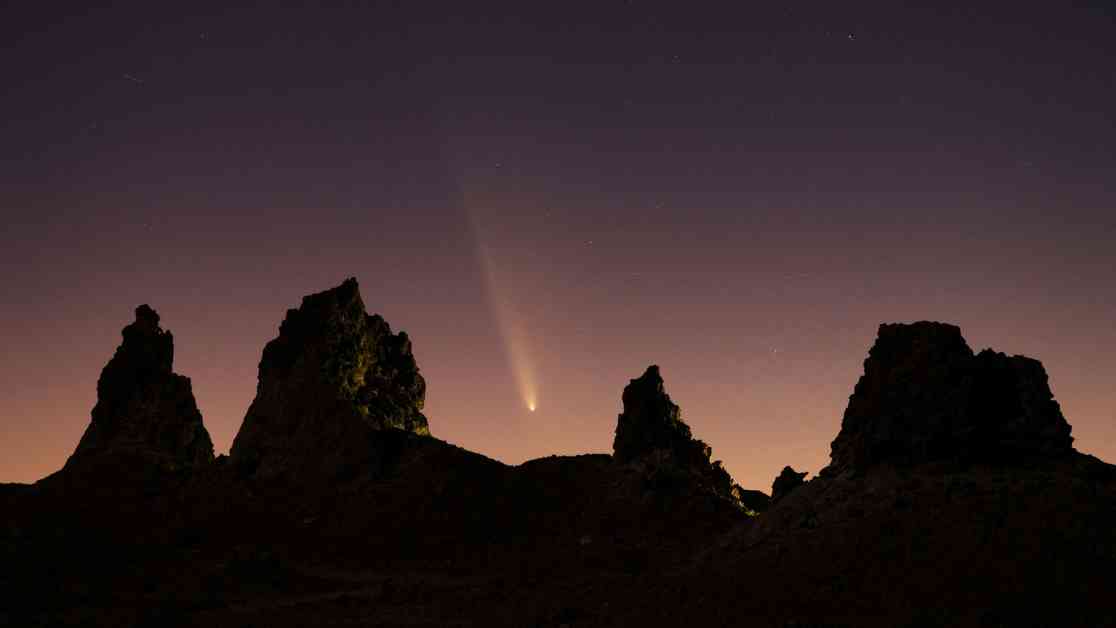Stargazers around the world were thrilled to witness the spectacular display of the “comet of the century” as it streaked across the skies of the northern hemisphere. Comet A3, also known as Tsuchinshan-ATLAS, lived up to expectations as it passed within about 44 million miles of Earth on Saturday.
Photographs taken in various locations in the UK, US, and Asia captured the comet as it made its journey through the inner solar system. This rare phenomenon is estimated to occur once every 80,000 years, indicating that the comet’s last appearance from Earth would have been during the time of the Neanderthals.
Researchers believe that the comet originated from the Oort Cloud, a vast spherical shell surrounding our solar system that contains billions of objects, including comets. The Royal Astronomical Society (RAS) has dubbed the comet as the “comet of the century”, highlighting its significance in astronomical circles.
Comet A3 was first discovered in January 2023 by two separate observatories – China’s Tsuchinshan Observatory and South Africa’s ATLAS system. The comet’s name is a combination of both observatories that played a crucial role in its identification.
Although the comet was previously visible in the southern hemisphere from 27 September to 2 October, skywatchers who missed the initial sighting will still have the opportunity to observe it until 30 October. Dr. Robert Massey, the deputy director of the RAS, suggested that capturing a photo of the comet is achievable, especially with a digital single-lens reflex camera.
For those with a good mobile phone camera and a small telescope, Dr. Massey recommended the method of holding the phone against the telescope’s eyepiece to take a picture. This technique was successful with previous comets like NEOWISE in 2020, showcasing the potential for amateur astronomers to document such celestial events.
The stunning images of the comet taken in locations such as Dorset in the UK, Lake Murray near Columbia, South Carolina, and Kamakura City in Japan, provide a glimpse of the cosmic beauty that graced the night sky. Additionally, the comet’s appearance near iconic landmarks like the Saints Peter and Paul Cathedral in Russia and Lake Murray Dam’s Hydroelectric Intake Towers in South Carolina add a surreal touch to the celestial spectacle.
As the “comet of the century” continues its journey through the inner solar system, astronomers and sky enthusiasts alike are encouraged to seize the opportunity to witness this rare cosmic event and capture the beauty of Comet A3 for posterity.










